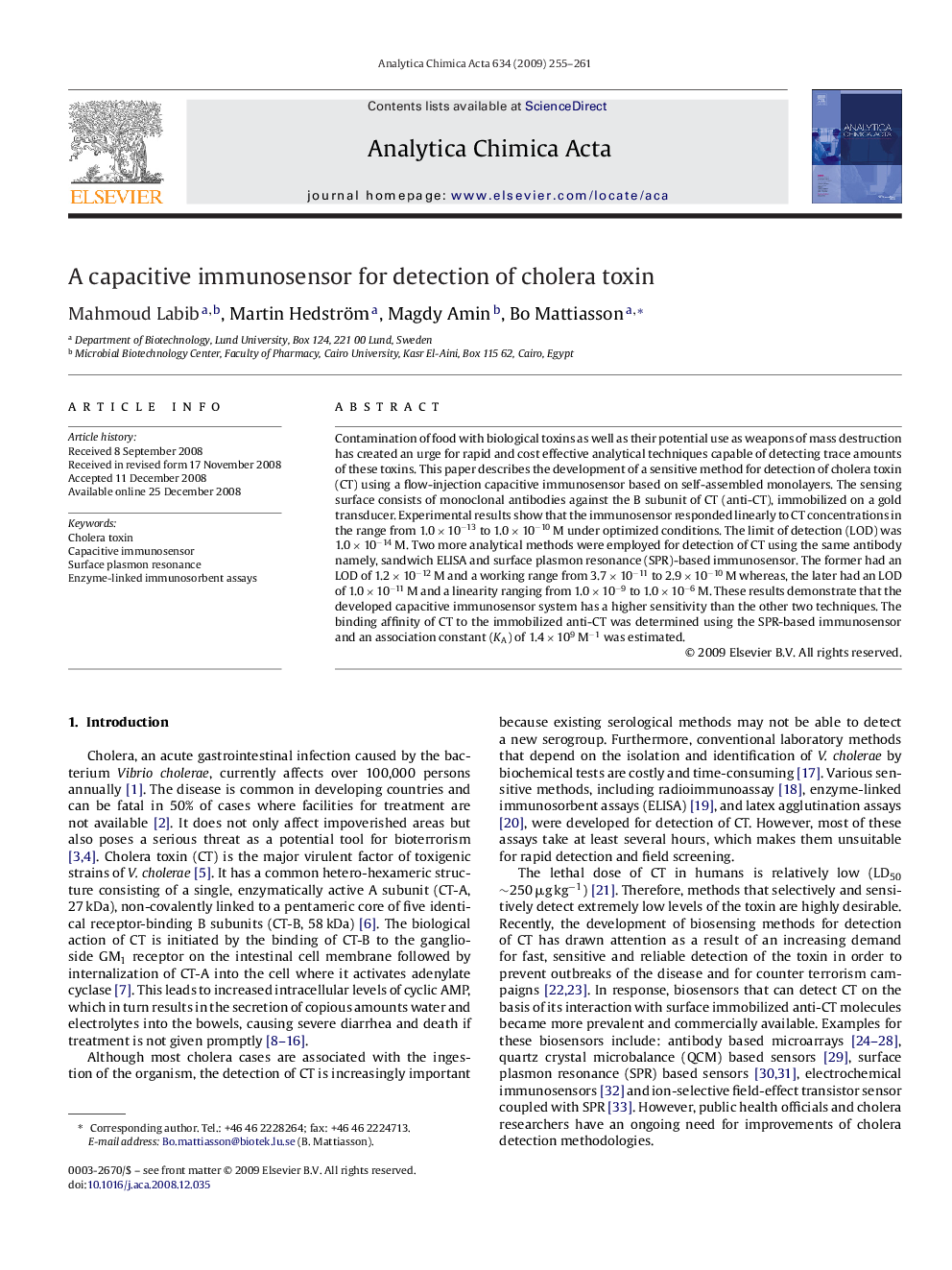| کد مقاله | کد نشریه | سال انتشار | مقاله انگلیسی | نسخه تمام متن |
|---|---|---|---|---|
| 1169421 | 960634 | 2009 | 7 صفحه PDF | دانلود رایگان |

Contamination of food with biological toxins as well as their potential use as weapons of mass destruction has created an urge for rapid and cost effective analytical techniques capable of detecting trace amounts of these toxins. This paper describes the development of a sensitive method for detection of cholera toxin (CT) using a flow-injection capacitive immunosensor based on self-assembled monolayers. The sensing surface consists of monoclonal antibodies against the B subunit of CT (anti-CT), immobilized on a gold transducer. Experimental results show that the immunosensor responded linearly to CT concentrations in the range from 1.0 × 10−13 to 1.0 × 10−10 M under optimized conditions. The limit of detection (LOD) was 1.0 × 10−14 M. Two more analytical methods were employed for detection of CT using the same antibody namely, sandwich ELISA and surface plasmon resonance (SPR)-based immunosensor. The former had an LOD of 1.2 × 10−12 M and a working range from 3.7 × 10−11 to 2.9 × 10−10 M whereas, the later had an LOD of 1.0 × 10−11 M and a linearity ranging from 1.0 × 10−9 to 1.0 × 10−6 M. These results demonstrate that the developed capacitive immunosensor system has a higher sensitivity than the other two techniques. The binding affinity of CT to the immobilized anti-CT was determined using the SPR-based immunosensor and an association constant (KA) of 1.4 × 109 M−1 was estimated.
Journal: Analytica Chimica Acta - Volume 634, Issue 2, 23 February 2009, Pages 255–261